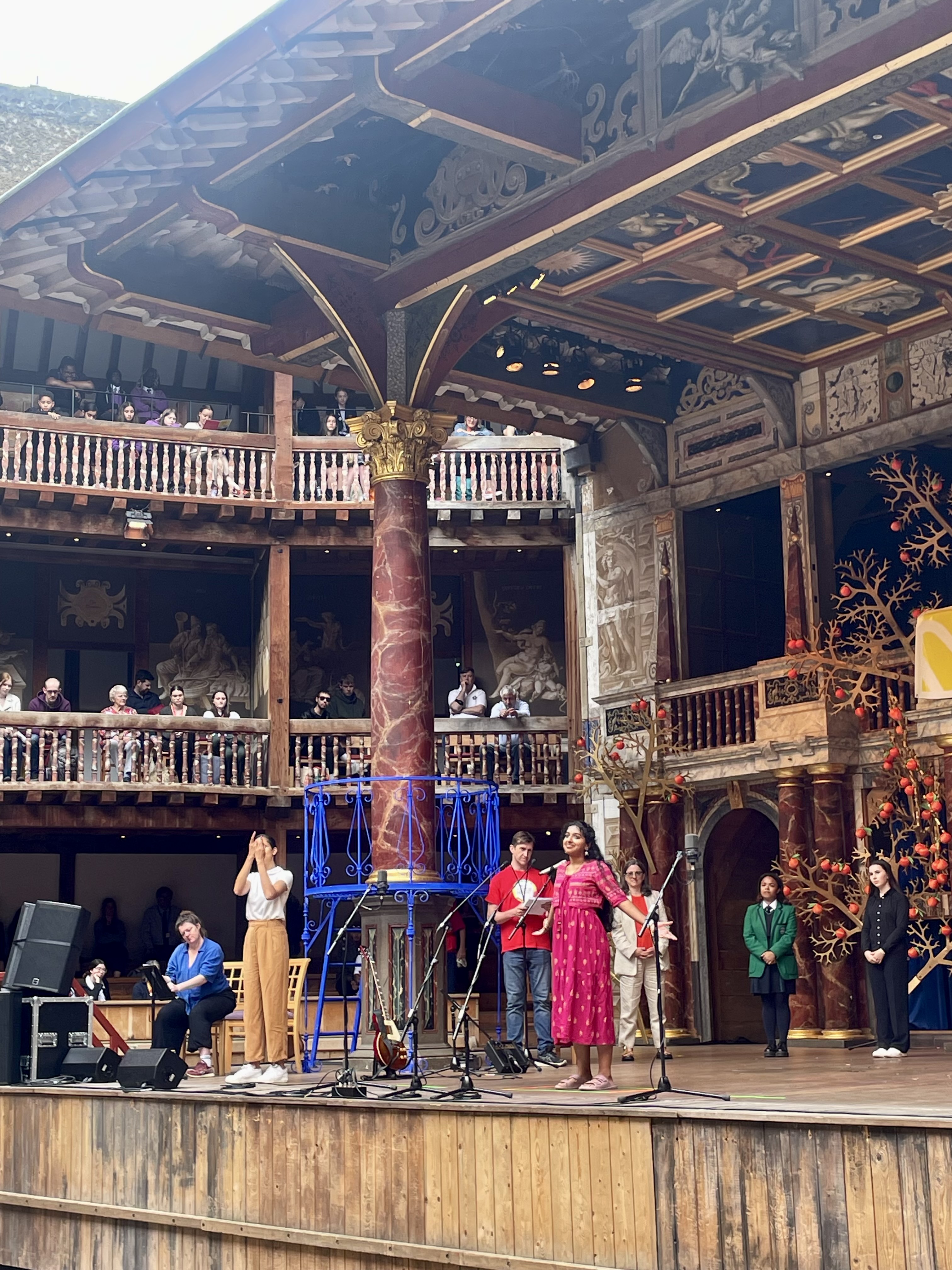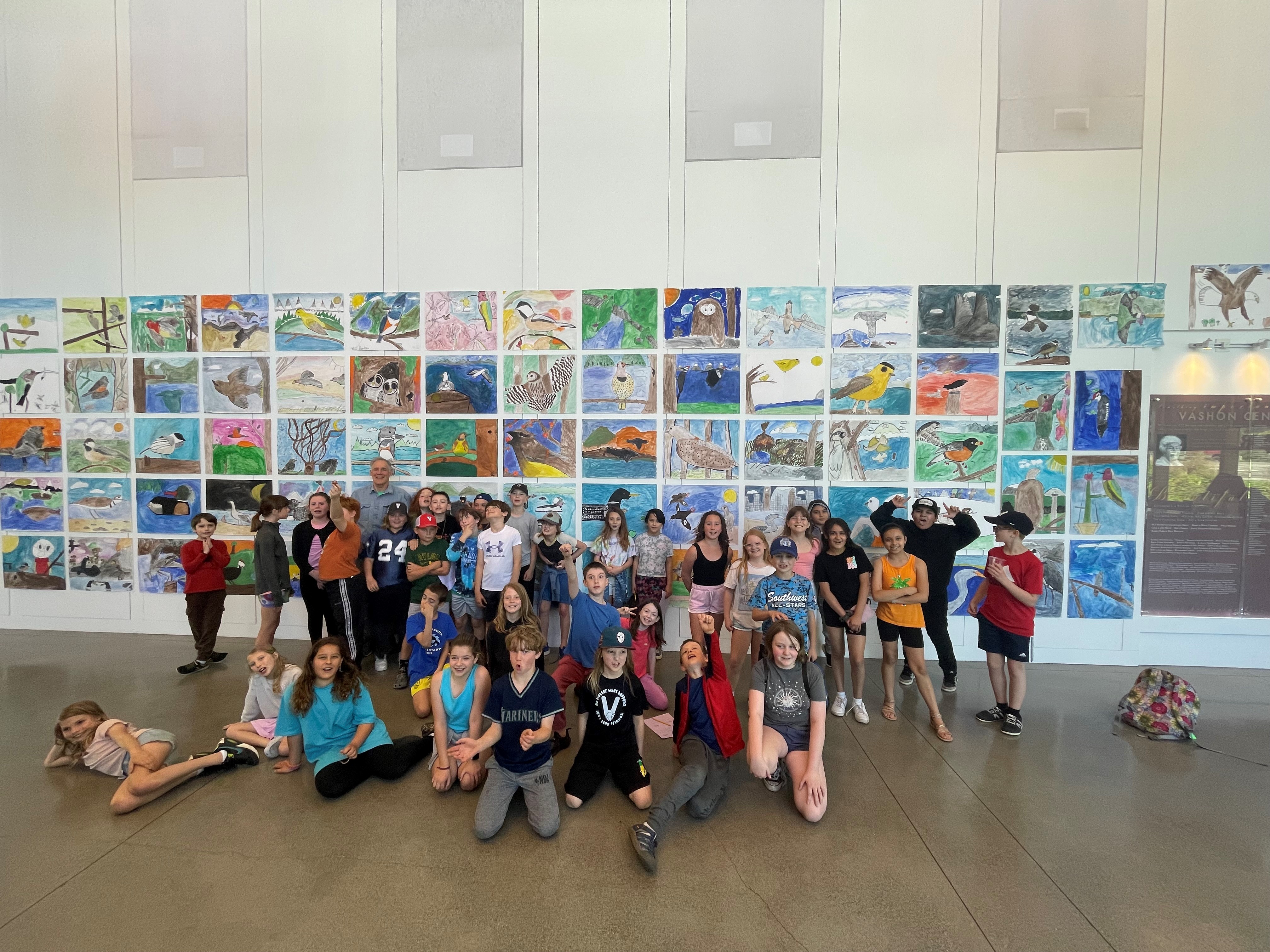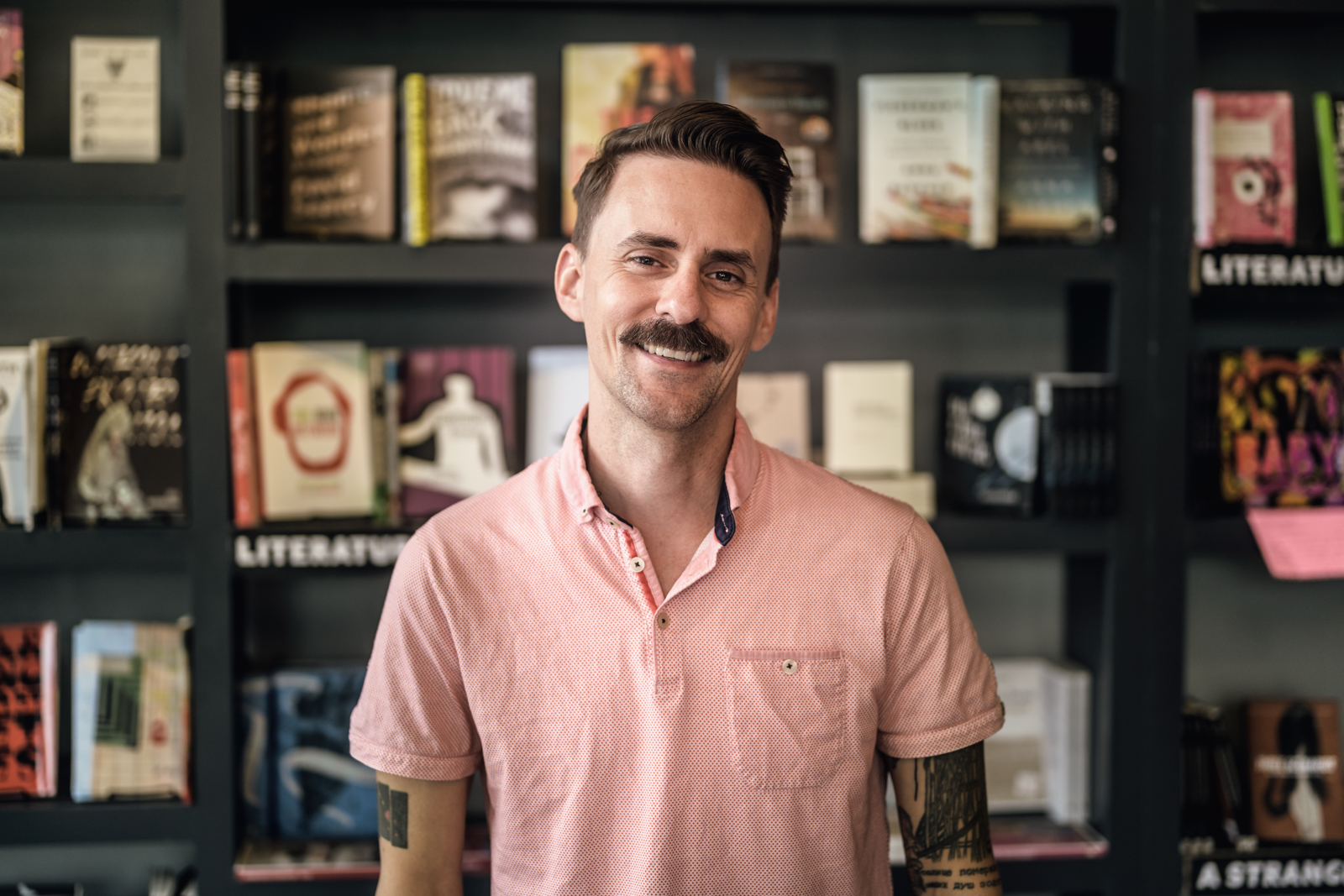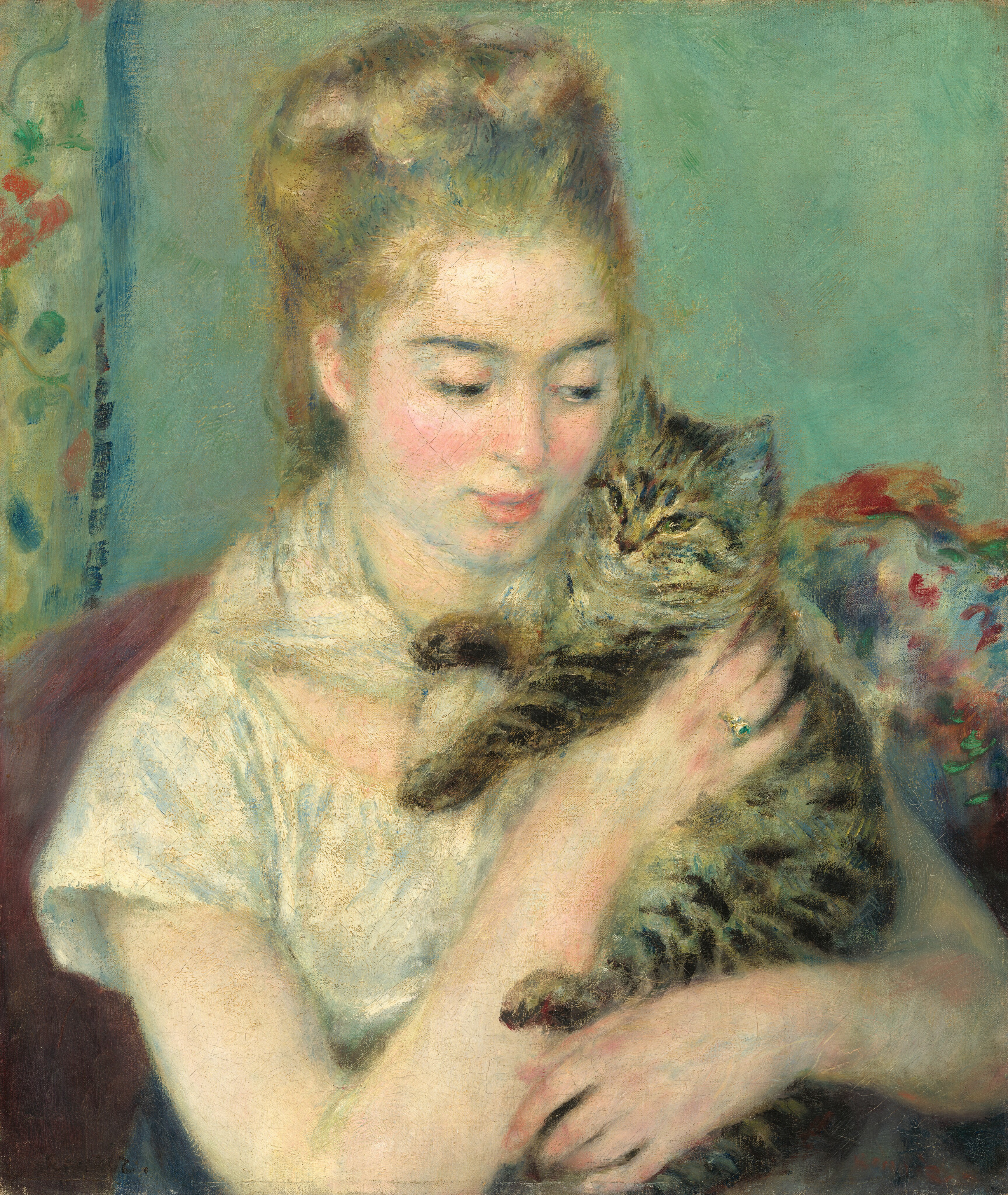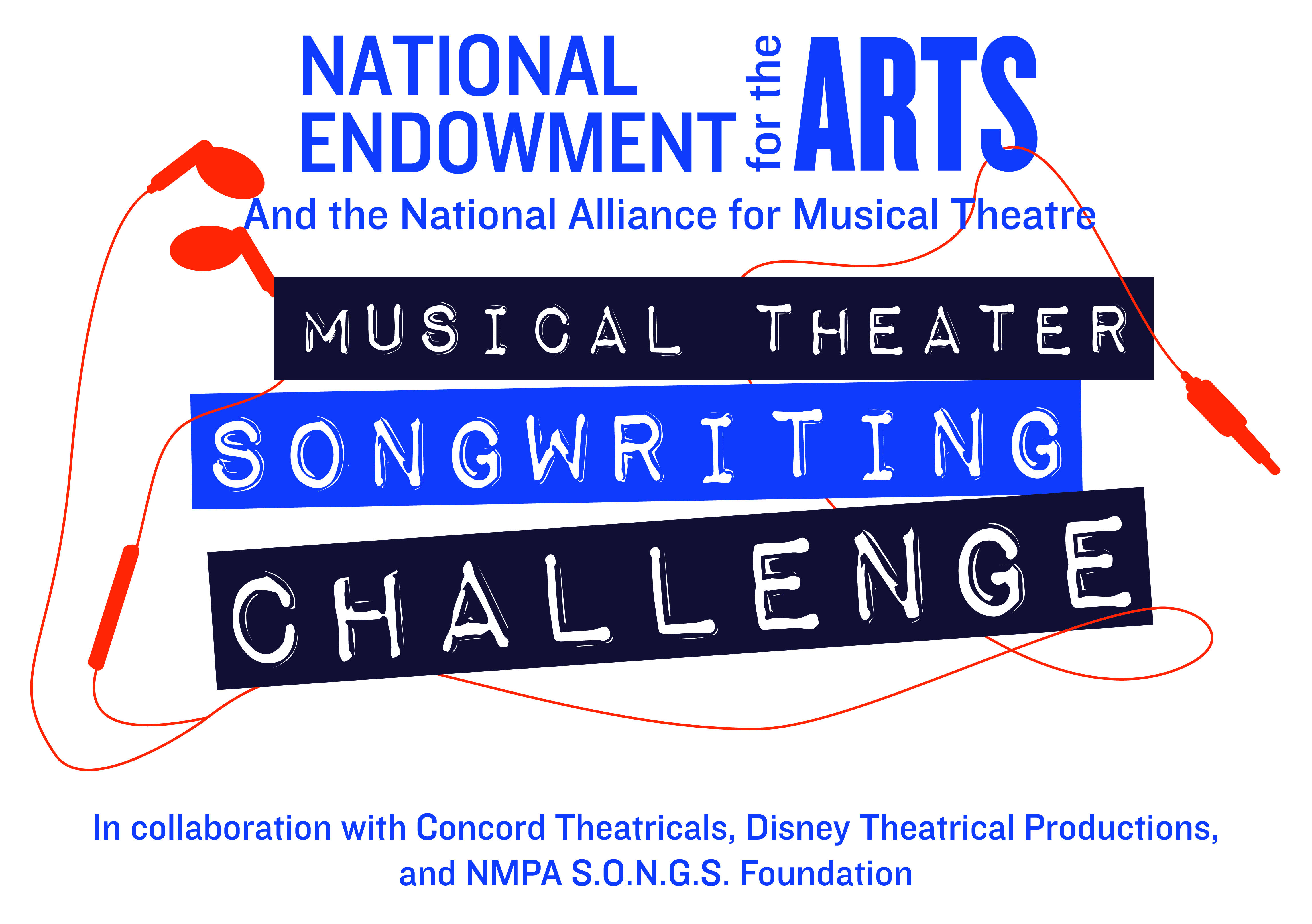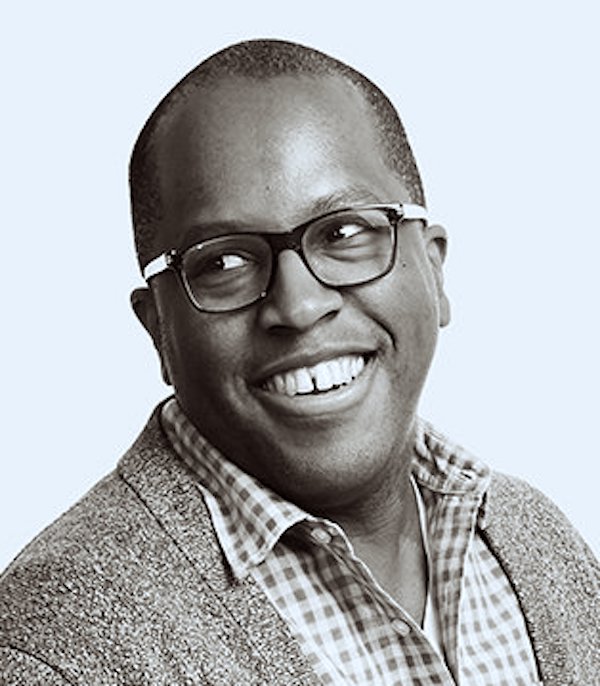Bril Barrett
Music Credit: “NY” composed and performed by Kosta T, from the cd Soul Sand. Used courtesy of the Free Music Archive.
Bril Barrett’s tapping recorded by Hypothetical Films, 2024.
Jo Reed: From the National Endowment for the Arts, this is Art Works. I’m Josephine Reed.
You are listening to the tap dancing of 2024 National Heritage Fellow, Bril Barrett. Bril is a Chicago-based tap dancer and educator whose career spans over four decades, during which he has performed with renowned companies like Riverdance and shared stages with tap legends. Recognizing the power of tap to heal individuals and communities, Bril felt a need to pass along this art form and its history and cultural significance. So in 2001, Bril Barrett co-founded M.A.D.D. Rhythms. The organization is committed to providing affordable arts education and mentorship to Chicago’s youth, emphasizing the importance of tap as a form of expression, resistance, and community building. Bril Barrett’s work in Chicago and his contributions to the art of tap dance has been so far-reaching that he was honored with a 2024 National Heritage Award, the highest recognition of artistic excellence in folk and traditional arts in the United States.
Bril Barrett, welcome to Art Works.Congratulations on being named a 2024 National Heritage Fellow!
Bril Barrett: Thank you so much. I appreciate it a great deal.
Jo Reed: Tell me something. How did you get into tap?
Bril Barrett: Well, let's see. It's a long story. So if you've got a moment… My grandmother was originally from Arkansas. My grandfather was from Shreveport, Louisiana. I don't remember exactly how they met and got married, came here to Chicago, and my grandmother always wanted to do something in the arts, but her life situation did not allow for it. So she, in turn, tried to get her children into the arts once she had a family and start having my aunts and uncles. And they all dipped their toes in the water, but nobody jumped in. And so when my aunts and uncles started having their children, my grandmother was like, oh, I'm going to start working on the grandchildren. So my grandmother in turn, really talked my mom and my aunts and uncles into putting all of us, i.e. me and my cousins, into the arts. So that's kind of how I got exposed to the arts at all. It was a generational wish [laughter] passed down from my grandmother.
Jo Reed: And what was it about tap that so appealed to you?
Bril Barrett: Well, the interesting thing was when I first started, I didn't even start with tap as a standalone thing. I was in a program at a community center in Chicago, and they offered everything. And that community center was called BBF. And at that community center, when you went into the theater program, they wanted to expose us to everything. So there was music class, there was voice lessons, then there was dance, and the dance was ballet, jazz, and tap. And then there was set design and lighting design, everything involved in a theatrical environment was part of this program. So I did a little bit of everything. But as I did tap, it just spoke to me. I immediately had a different kind of connection to tap dance, and my teacher at that time was a gentleman named Carlton Smith. He, I remember the first dance he ever taught us was to Stevie Wonder's Sir Duke. And I had grown up listening to, well, grown up-- I had grown to my young age of five, six and seven, listening to Sir Duke or listening to Stevie Wonder. Because my mom was a Stevie Wonder fan. And so for my first choreography tap-wise to be to a song and an artist that I was familiar with, it immediately made tap feel home for me.
Jo Reed: You came into tap in some ways through the music of of Stevie Wonder, which is brilliant. I never would have made that connection but when you say it, it makes sense although I always think that tap is connected to jazz—they both are so steeped in improvisation…
Bril Barrett: And that is right. They are absolutely connected, except I didn't get that education or that part of the education process until later. I met a teacher whose name was Mr. Taps, and he was a guy performing in the subway. And he was dancing to jazz music. He was, as a matter of fact, specifically big band music.
Jo Reed: He is legendary around Chicago--How did you and Mr Taps hook up?
Bril Barrett: I met Mr. Taps in the subway. He was a street performer. And he was doing something I loved, which was tap, which I had grown to love at the Youth and Community Center, and he then was making money from it. So I saw this man tap dancing and people were giving him money and I was like, oh, I want to do that. And I asked him if I could perform with him. I told my mom I wanted to dance with him. She said okay, if he was okay with it. He said okay. So every day I would perform in the subways of Chicago with Mr. Taps after I got out of school, and the cool thing was, he was dancing to jazz, all of the big band era band leaders and stuff, he really was dancing to all of them. So I started to get to know now the connection of tap with jazz. And he did nothing but improvisation to the point that I didn't even know what improvisation was. So I assumed this man had the best memory in the world. I thought he had thousands of routines. And he said no, I'm doing improvisation. And I'm like, I have no idea what that is. I would go out and I would do pieces of the routines that I had learned at the Sammy Dyer School of Theater and BBF, the Community Center. And I would then sometimes forget what I was doing. And he would say just make it up. And so I would make it up, and the more I made it up, the section just to bridge the sections of what I knew, the make it up started to be longer than the sections of what I knew. He was really exposing me and teaching me how to improvise. Count Basie, Duke Ellington, these were the people he listened to and played all their music, so now I'm tapping to jazz. He also introduced me to footage, the old tap dancers. I really didn't have much history in terms of who came before me until Mr. Taps introduced me to footage—old clips from old movies, which in the tap dance we just call footage. And he would have a footage night Friday night. We would tap in the subway, make money, and then we would go to his house and have pizza and watch old movies. And he loved the Nicholas Brothers, he loved the Four Step Brothers, he loved Fred Astaire. And so I started watching all of these old clips and footage, and that's where it started to make a new kind of sense to me, that this stuff that I'm doing is just a continuation of all this stuff that came before me.
Jo Reed: I guess since you met Mr. Taps, the history and culture of tap has been important to you and continues to be important to you and very central to the work that you do. So let's talk about that a little bit. The history of tap. At its most fundamental, it's an art where the music and the dance are the same. The dancer is the percussionist. It has a long history coming back from Africa.
Bril Barrett: I tell people that one of the things I love about tap, is that tap dance is the only art form where you, as the dancer, are making, especially with improvisation, you're making the music that you're dancing to while you're making it. I know that sounds like a crazy little a loop, if you will, but so that is what I love about tap. It is totally dependent how you dance and how you sound and what music you make is all contingent on how you're feeling, how your day was, what you want to say. It's a total expression of what's going on inside of you. I find that I can be fully free and fully be myself when I'm tap dancing. And so watching that footage started connecting me with the history, which just made me then be hungry for more history. And when I started finding out about not only the origins of tap, which I'll go into in a second, but also the things that people went through in order tap, it made me just have a bit more respect and a bit more ownership of being a proper representative of the art form. So when I started learning about tap's history and the whole African experience, the way our ancestors brought these rhythms, and brought these syncopations and patterns with them, as they came to this country through the horrific thing that we now know as slavery, the Middle Passage is one of the worst things you could ever hear and read about, but out of that came tap dance, among other things. And so I always liken that to the ability to get something wonderful out of something awful. Tap is that for me. Learning about that history and learning that when my ancestors were brought here and enslaved, they still tried to keep things that were natural and common and just regular for them. They tried to keep those things. And as the institution of slavery required that those things be taken, be left behind, they found new ways to then incorporate those things. So example: the junjun, the djembe, the drums, all the different rhythms that were played there when the drums were taken, because enslaved people were using them to communicate from plantation to plantation. Then the slaves-- or the enslaved people, I like to be right with my terminology, the enslaved people then began using a hambone and using our bodies to replace the drums. We didn't need the drums, we became the drum. And so when you talk about tap dance and its African origins, it literally to me translates to we are the drum. We are the rhythm. So you don't need anything else to make the music that expresses who and what you are.
Jo Reed: Yeah, it's a dance of resistance, I think, and a dance of resilience. Also a dance of fellowship.
Bril Barrett: Absolutely.
Jo Reed: And that is what you convey when you teach tap. You're not teaching the steps, you're teaching tap, you're teaching dance, you're teaching rhythm, but you're also really giving it to students in a context.
Bril Barrett: Absolutely. I feel like steps are just like the alphabet-- tap steps are to tap dance as the alphabet is to the English language, meaning if you only learn letters, and you'd never learn that you can put them into words and then the words into sentences and the sentences into paragraphs and so forth and so on, if you never learn the possibilities of what you can do with those steps, then you're not learning the language of tap. So I look at the West African traditions that are ingrained within the history of tap, and I make sure that my students understand that contextually, tap dance is now a language for you, and you can now use it to express, to resist, you can use it to fight - I call it "taptivism." You can become a taptivist, because I literally use and try to convey to my students that tap dance can be how you fight the ills of this world, how you stand up for what you believe in. You can use tap dance as a vehicle for all of that.
Jo Reed: Bril, you spent time dancing professionally, but then teaching became important to you. How did that come about?
Bril Barrett: It's interesting. My goal, once I fell in love with tap, is I wanted to be a famous tap dancer. That was it. That was the end of my entire journey with tap dance. I remember I used to say every year, if I'm not famous by the time I'm 18, I'm going to quit. If I'm not famous by the time I'm 21, I'm going to quit. And so my whole motivation in life was being a famous tap dancer, and teaching was just a thing I could do to make some money on the side while I waited on performance opportunities. Somewhere along the line, I realized that teaching was starting to take over in terms of the importance in my mind and in my soul. The more I taught, the more it became less about what I could show the world with my tap, and more about what I could instill within the next generation to make them fall in love with tap the way I did. Not only for them to fall in love with it, but for them to then grow and then pass it on, because that's how you keep something alive. You keep teaching it, and you hope that the next generation falls in love with it and then they teach it. And so making sure that all my students know of the ancestors' stories, or the dancestors, as we call them, their stories and what it took for them to be able to do this dance, is how they then turn around and they learn it and they perform it and they exemplify it. And then they teach it, and then they demand that excellence from their students so that generationally, we never lose this beautiful art form called tap dance.
Jo Reed: You’re definitely reaching back to the ancestors, you're bringing something into the present that has been done for at least hundreds of years, but it's important to make sure that it's not calcified. You're giving it to students in a way that they can move forward with it.
Bril Barrett: Absolutely. So when I teach, I try to teach that every student will know that they're upholding a tradition, but I also try to teach the same freedom of expression that endeared me to tap so much, so that you take it and you express what you're feeling. If you're loving hip hop and you're loving reggae or pop or classical or country, whatever music genres you love, you can tap dance to it. Tap dance goes with everything, so I make sure that my students have a strong foundation, but then they're also taught that this foundation is what will allow you to reach new heights that tap dancers like myself may never have thought of, because I don't have your life. Your life is now part of the process of building a great tap dancer. And everybody's life individually dictates what kind of tap dancer they can be if they so choose.
Jo Reed: It's boundless.
Bril Barrett: Yes.
Jo Reed: Tell me about the mission of MADD rhythms. First, what is MADD short for?
Bril Barrett: MADD is short for Making a Difference Dancing. I tell people say it as a sentence, making a difference dancing rhythms. I believe everybody was put on this earth to make a difference. We make our difference dancing rhythms, and we encourage everybody to find a purpose, and a way to utilize something to make a difference in their lives. Also MADD is slang, I'm a child of '90s hip hop. So everything that was true to hip hop in the '80s and '90s in New York culture, everything was mad something, I'm mad cool. I got mad style, I got mad flavor, I got mad rhythms. So the title of the company itself, the organization, is a shout out to the fact that we must always stay rooted in community, we must always utilize tap dance for more than just entertainment. We have to use it to make a difference in our communities. I'm 100 percent there, that's what I'm committed to. But at the same time, it also shows my love of hip hop. I love hip hop, which is why I have no problems tap dancing to hip hop music, or teaching to hip hop music, because hip hop itself is just another amalgamation of jazz and soul and R&B. The mission is to expose our young people to the art form. But we want to make sure that they respect the heritage and history, which is why we teach and keep the history alive, and then also give opportunities for them to then as tap dancers be able to express themselves, and have performance opportunities and whatever opportunities that will allow the art form to then be seen and carried on for the next.
Jo Reed: MADD Rhythms has certainly evolved over the years. How many different programs now are within MADD Rhythms?
Bril Barrett: Thank you. I'd like to say that MADD Rhythms started out as a volunteer program to teach young boys of color the art of tap dance, so maybe they would have a choice at a positive alternative in life, because that's what it did for me. And then my little sister one day said, how come it's got to be all boys? I was like, you're absolutely right. Here's your place. And now my little sister, Starr Dixon, is one of the premier tap dancers in the country. So that original company, then they all became the teachers of what then became the MADD Rhythms Tap Academy, so now I'm not the only teacher. I've now raised a generation of teachers who can carry on this work. I'd like to say we replaced the school-to-prison pipeline with basically the studio-to-stage pipeline. You come into MADD Rhythms as a baby, with our Tap for Tots in the Tap Academy. You do all the levels of learning in our academy, and then you can apply for one of our jobs. We have MADD Rhythms apprenticeship programs, where young people between the ages of 14 to 18 get paid to learn how to tap. So their after school job and their summer job is to come learn how to tap dance. And then if they're still into it after that, they become an apprentice with our professional company, and they start training with the professional company. And if they pass that phase, then they become a professional member of the company. We currently have young people in our professional company that have started out as students at five and six years old at our Tap Academy. I wanted this to be the answer to the school-to-prison pipeline, saying we can start you, a child can come off the streets of Chicago from any neighborhood, come to our studio in Bronzeville, and within this one space be given every tool needed to become a professional tap dancer, respected and revered around the world.
Jo Reed: And the home of MADD Rhythms is the Harold Washington Cultural Center.
Bril Barrett: Absolutely. The Harold Washington Cultural Center, which is named after this city's first black mayor. We're located on King Drive, named after, of course, the great and honorable Martin Luther King, Jr., and we're in a neighborhood called Bronzeville, which is the neighborhood where after the Great Migration, when black people were allowed to live in Chicago, this was the only neighborhood they were allowed to live in. So, all of these converging historic cultural timelines all converge on this one place, and it's where we're building tap dancers.
Jo Reed: MADD Rhythms is known for many things, but it's also known for it's such a diverse group of dancers, and I wonder how the diversity both enriches the company's performances, but also the educational outreach that you have.
Bril Barrett: I will tell you, the interesting thing is I think MADD Rhythms is a great example of diversity. And it just happened. I started this company out for young black children specifically, but there was never a barrier that said anybody else couldn't come learn. That has to be said when you think about the way things are in our society right now, so many things are one or the other. Mine was either/and - I'm a firm believer of the either/and. I started a podcast called The Either/And Podcast because I'm such a firm believer of the either/and of it all. We can take all of these young people from underserved black and brown communities in the city, but we're not going to stop anyone from coming in who is interested in learning the art form of tap dance. And by that metric, the only thing that matters is your willingness to steep yourself in the culture and the history of this dance. And if you're willing to do that, we'll take you. So anybody can be a part of this thing, they just have to want to. So I love that the diversity of MADD Rhythms is not only ethnically, you can look at us and see how diverse we are, but chronologically, I'm still a member of my own company at almost 50 years of age, and our youngest member is 15. So we've got generations working out together, we've got cross-cultural ethnic backgrounds, different parts of the city, different cities, sometimes different countries - at times we've had people come from other countries to study with us. And then we don't have a typical size, you can't look at a MADD Rhythms member and say that's the look of MADD Rhythms, because we don't care what your body type is. We don't care what your height is, we don't care what any of those things are. As long as you want to do this dance, I'm happy and obligated to give it to you.
Jo Reed: Let me ask you this, because you're also so committed to giving back to the community through tap dance: How do you instill that philosophy in your students and company members?
Bril Barrett: By way of repetition. [laughs] And also by example. Part of the way that I instill a lot of the things that are now just part of the culture of MADD Rhythms is by leading. I can say, for example, like any community, the tap community is a family. And at times we've had riffs in the family. But I've always been one, well, not always, but I've learned to be someone who can be mature enough to humble myself, to approach someone I may have a riff with and say, let's talk this through for the sake of being better people. Let's try to come up with a solution. And so a lot of that I do out in the open and in front of my company, and we have conversations about it. During the pandemic, we moved our rehearsals to Zoom, and people are always thinking, how did y'all dance on Zoom? We didn't even dance. We just talked to each other, and we talked about being better people and being there for each other and being supportive, and being family. So I love the fact that MADD Rhythms is an organization that can be considered a business, a professional organization, but it's also a family. You'll often hear many of the young members call me everything from Tap Dad to Papa Bear, and I'll call them my Tap Daughter or my Tap Son or my children, because I'm a firm believer that it's something very special and endearing to the family you choose. Most of us don't pick our families, we're just born into it. But I've chosen MADD Rhythms to make it a family, and the people that are part of the family have chosen to be a part of that family. I used to tell them all the time in my training programs, if I make you all wonderful tap dancers but horrible human beings, I've failed. Not only can you work on being a better tap dancer, but you have to consistently and constantly work on being a better person. I show that by example first, but also sometimes when you're the best in the room, then your responsibility is to help others feel good about where they are, not to make them feel bad about not being where you are.
Jo Reed: How does M.A.D.D. Rhythms engage with local schools and community organizations.
Bril Barrett: We engage with everybody. And that's the one thing I love that as we've grown over the decades now, because we're 23 years of an organization. I have members of my company who weren't born when the company was started, which is crazy to me, because I never even imagined that. But one of the things that we've always done is we've always no matter what we do professionally, on what's considered a professional scale or a large scale, we always keep some type of ties to our community centers, organizations, whatever, you name it, events. So for an example, we just debuted at Jacob's Pillow earlier this year, which in the dance world period-- it's an institution of greatness. And then this week back in Chicago, we're going this very week to perform at a park called White Park, in a neighborhood called Rogers Park in Chicago, which is a community that doesn't always get a lot of entertainment or exposure to tap dance. We're going there to do a free show. Anybody can just pull up and sit down and watch the show. And I believe that the balance of making sure that we're always accessible to the community, and that we also are fulfilling our obligations as professionals, endears people to connect with us, even if they don't tap dance, there's some people who support us and just come see shows, and even give to our nonprofit, because they see that the work that we do is a continuous build. There's no ceiling for what we're trying to accomplish, with exposing people who aren't normally exposed to tap dance, exposing them to tap dance.
Jo Reed: Bril, let me ask you: what advice would you have for a young dancer who wanted to follow in your footsteps, and use their art to make a positive impact on their community?
Bril Barrett: I would say look to examples of those that have done it before you, because that's the first thing. Sometimes we don't utilize the knowledge of our elders enough. Everybody who's been here has been through some things, and can tell you about it, and some people are just never asked. So when young people come to me and ask questions, I'm more than happy to answer all of them, and in great length, because a lot of the great tap dancers that came before me, when I met them, I asked questions, they answered in great length, in details. And so I passed that on as well. But I would then tell them, you have to be willing to sacrifice your own comfort even at times, in order to commit to this art form, and especially making a difference with this art form, using it as a tool to fight against injustice, using it as a social justice mechanism. You have to be willing to understand that people are not going to always want to hear it. People are not going to always support it. But you have to be committed enough to love it through it all, and to fight with it, utilizing it through it all.
Jo Reed: Bril, you have won many awards. You were a Chicagoan of the Year. Now you're a National Heritage Fellow. What does receiving the National Heritage Fellowship mean for you?
Bril Barrett: I will tell you in a nutshell, I don't do what I do for recognition. I do it to make a difference in my community. But sometimes it takes a toll on you a lot of times emotionally, physically. Eight hours of sleep sounds like the fantasy world to me. So to be recognized, even from the Chicagoan of the Year aspect, and now the NEA as a National Heritage Fellow, that recognition just says all of your sacrifices are not in vain. We see you. And sometimes all we need to help rebalance all of the energy and all of the commitment that we put out, all we need is someone or some organization to say, we see you and we want to help you continue to do what you do. And of course, the recognition itself is wonderful. The cash disbursement that comes along with it is wonderful. But what's really wonderful, I can't wait to go to D.C. and be a part of the ceremony of just people saying we see you. Sometimes you don't know you need that until you get it, and it's the most fulfilling thing in the world. And then it gives you a little bit more fire to go back to your community, pick up where you left off and keep fighting the good fight.
Jo Reed: I think that is a great place to leave it. Bril Barrett, thank you. Congratulations again. Thank you for the work that you do, it really is a pleasure.
Bril Barrett: Thank you so much. It's been a pleasure to talk with you. I look forward to our paths crossing either on the wood or off, one time again.
Jo Reed: That was tap dancer and educator Bril Barrett—Come Celebrate with Bril and the rest of the 2024 NEA National Heritage Fellowship honorees through film and in-person conversations. The event takes place on Sept. 17 at the Kennedy Center and is free and open to the public. Tickets are available beginning today August 20. See arts.gov for details. You’ve been listening to Art Works produced at the National Endowment for the Arts. Many thanks to Hypothetical Films for the audio of Bril Barrett’s tapping. I’m Josephine Reed. Thanks for listening.


